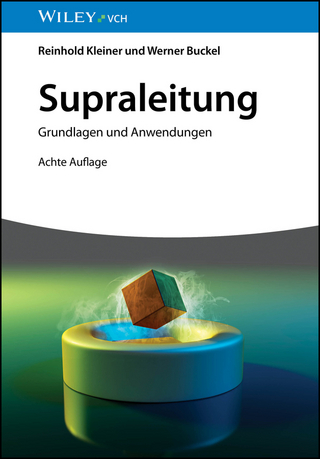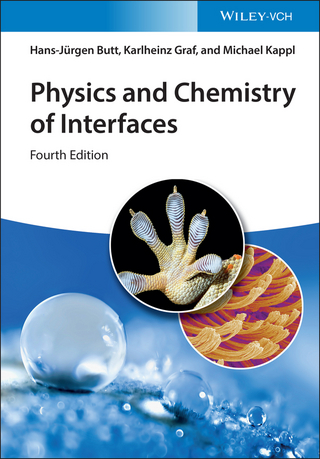
Advances in Nuclear Physics
Kluwer Academic/Plenum Publishers (Verlag)
978-0-306-39107-1 (ISBN)
- Titel ist leider vergriffen;
keine Neuauflage - Artikel merken
Such a model state is called a single-particle wave function. At the energy of the single-particle waVe function one of the actual nuclear wave functions may resemble the single-particle wave function closely.
1 Nucleon-Nucleus Collisions and Intermediate Structure.- 1. Introduction.- 2. A Simple Model of a Resonance Process.- 2.1. The Model and Its Stationary State Solutions.- 2.2. Time-Dependent Picture.- 2.3. Applications of the Simple Model.- 2.4. Mixing Times in Nuclear Excitations.- 3. Nucleon-Nucleus Scattering and Intermediate Structure.- 3.1. Review of the Models of Nuclear Resonance Reactions.- 3.2. Physical Picture of Nucleon-Nucleus Scattering.- 3.3. The Optical-Model Strength Function as a Function of Mass Number.- 3.4. Shell-Model Investigations of Doorway States.- 3.5. Vibrations as Doorway States.- 3.6. Doorway States and Isobaric Analog Resonances.- 3.7. Electromagnetic Interactions and Intermediate Structure.- 3.8. Intermediate Structure in Fission.- 3.9. Doorway States and Partial Width Correlations.- 3.10. Intermediate Structure and the High-Energy Neutron Tail in Neutron Evaporation Spectra.- 3.11. Intermediate Structure and Statistical Fluctuations.- 3.12. Experimental Observations of Intermediate Structure in Total Neutron Cross Sections.- 4. Theoretical Framework for Intermediate Resonances.- 4.1. Shell-Model Theory of Nuclear Reactions.- 4.2. Theory of Average Cross Sections.- 5. Summary.- References.- 2 Coulomb Mixing Effects in Nuclei: A Survey Based on Sum Rules.- Abstract.- 1. Introduction.- 2. Sum-Rule Approach to Coulomb Mixing.- 3. Evaluation of Sum-Rule Quantities for Separate Isospins...- 3.1. Oscillator Shell Model.- 3.2. Shell Model with Correlations.- 3.3. Specification of ?(T?).- 3.4. Specification of N(T?).- 4. Total Isospin Impurities of States.- 4.1. Parent States.- 4.2. Analog States.- 5. Superallowed Fermi Transitions.- 6. Isobaric Mass Formula.- 6.1. First-Order Energy.- 6.2. Second-Order Energy.- 6.3. Correlated Model.- 6.4. Configuration States.- 6.5. Observed Values.- 7. Analog States: General Remarks and Lowest-Order Effects.- 7.1. ?Ec in Terms of Relative Coulomb Potential and Exact Parent State.- 7.2. ?Ec in Terms of Coulomb Energy and Unperturbed Parent State.- 7.3. First-Order Shift ?1and Pseudo-First-Order Shift ?1?.- 8. Analog States: Second-Order Shifts and Width.- 8.1. Estimate of ?Ec - ?1? = [?(-+) + ?(+-)].- 8.2. Estimate of (?2a - ?2p).- 8.3. Comparison of ?1 and ?1?.- 8.4. Implications for the Nolen-Schiffer Anomaly.- 8.5. Spreading Width.- 9. Second-Order Effects in Model Calculations.- 9.1. Coulomb Shift of Single-Particle States.- 9.2. Model Analog.- 9.3. Analysis of Shift Calculated from the Model.- 9.4. Analysis of Spreading Width Calculated from the Model.- 10. Conclusions.- Acknowledgment.- Appendix 1 Corrections from More Accurate Treatment of the Coulomb Potential.- Appendix 2 Explicit Treatment of Effect of Correlations on Second-Order Coulomb Mixing.- Appendix 3 Shell-Model Sum Rules for the One- and Two-Body Coulomb Forces.- Appendix 4 Coulomb Mixing Properties of Oscillator Orbitals.- References.- 3 The Beta Strength Function.- 1. Introduction.- 2. Beta-Transition Rates between Individual Nuclear Levels.- 2.1. The Fermi Transitions.- 2.2. The Gamow-Teller Transitions.- 2.3. Forbidden Transitions.- 3. Expected Properties of the Beta Strength Function.- 3.1. The Shell Model and Effects of Pairing.- 3.2. The Correlations.- 3.3. Fluctuations.- 4. Experimental Results on Beta Strength.- 4.1. Nuclear Level Schemes.- 4.2. Total Absorption Spectrometry.- 4.3. The Systematics of Beta Halflives.- 4.4. Beta-Delayed Particle Emission.- 4.5. Muon-Capture and Electromagnetic Transitions.- 5. Concluding Remarks.- Acknowledgments.- References.- 4 Gamma-Ray Strength Functions.- 1. Introduction.- 2. Theoretical Background.- 2.1. Nomenclature.- 2.2. Strength Functions.- 2.3. Spectral Distributions.- 3. Experimental Methods.- 3.1. Photoexcitation Method.- 3.2. Spectrum Fitting Method.- 3.3. Sequential Extraction Method.- 3.4. High-Resolution Gamma-Ray Method.- 3.5. Comparison of Methods.- 4. Properties of Gamma-Ray Strength Functions.- 4.1. General Properties.- 4.2. Detailed Properties.- 5. Discussion.- 5.1. General.- 5.2. Compatibility of Strength Functions.- 5.3. E1 Strength Function.- 5.4. M1 Strength Function.- 6. Conclusion.- Acknowledgments.- References.
| Zusatzinfo | biography |
|---|---|
| Sprache | englisch |
| Maße | 150 x 230 mm |
| Themenwelt | Naturwissenschaften ► Physik / Astronomie ► Atom- / Kern- / Molekularphysik |
| ISBN-10 | 0-306-39107-4 / 0306391074 |
| ISBN-13 | 978-0-306-39107-1 / 9780306391071 |
| Zustand | Neuware |
| Informationen gemäß Produktsicherheitsverordnung (GPSR) | |
| Haben Sie eine Frage zum Produkt? |
aus dem Bereich


